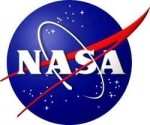Sun, Feb 06, 2011
Older Elementary Kids Get To Design Experiments To Fly In
Space
 Astronauts aboard the International Space Station this spring
will conduct six experiments designed by middle school students
from across the country. The winning proposals of the "Kids in
Micro-G" Challenge are from California, Idaho, Montana, New York,
Pennsylvania and Washington state.
Astronauts aboard the International Space Station this spring
will conduct six experiments designed by middle school students
from across the country. The winning proposals of the "Kids in
Micro-G" Challenge are from California, Idaho, Montana, New York,
Pennsylvania and Washington state.
In its second year, the program offers students in fifth through
eighth grades an opportunity to design experiments or simple
demonstrations for testing both in the classroom and in the
station's microgravity environment. A team of representatives from
NASA centers selected the winners from among 62 proposals. The
experiments will study the effect of weightlessness on various
subjects and show what the environment reveals about the laws of
physics.
"This is a wonderful opportunity for these students to learn how
scientists and astronauts work together to develop new technologies
for space exploration and to learn more about how things work on
Earth," said Mark Severance, International Space Station National
Laboratory Education projects manager at NASA's Johnson Space
Center in Houston. "By engaging students in interesting science
experiments, teachers can pique a child's interest while helping
develop higher-level thinking skills."
The winning experiments came from students at these schools:
- Chabad Hebrew Academy in San Diego, CA for "Attracting Water
Drops." This experiment will determine if a free-floating water
drop can be attracted to a static charged rubber exercise
tube.
- Neighborhood After School Science Association in Ava, NY, for
"Flight of Paper Rockets Launched by Air Cannon." This
experiment will determine the direction and distance traveled by a
paper air rocket launched in microgravity.
- Key Peninsula Middle School in Lakebay, WA, for "Pondering the
Pendulum." This experiment will examine the effects of microgravity
on a pendulum.
- Potlatch Elementary in Potlatch, ID, for "Pepper Oil Surprise."
This experiment will investigate the interaction of liquid
pepper/oil and water in a plastic bag in microgravity.
- Gate of Heaven School in Dallas, PA, for "Buoyancy in Space."
This experiment will determine if the buoyancy of an object is
affected in a microgravity environment.
- Will James Middle School in Billings, MT, for "A Comparison of
Dispersion of Liquid Pepper under Microgravity and Earth
Conditions." This experiment will compare the dispersal of liquid
pepper in microgravity to Earth's gravity.
The apparatus for the experiments was constructed using the same
materials as in a tool kit provided to astronauts on the space
station. The materials in the kit are commonly found in the
classroom and used for science demonstrations. The experiments will
take no more than 30 minutes to set up, run and take down.
More News
Decision Altitude (DA) A specified altitude (mean sea level (MSL)) on an instrument approach procedure (ILS, GLS, vertically guided RNAV) at which the pilot must decide whether to >[...]
Aero Linx: T-34 Association, Inc. The T-34 Association was formed in July 1975 so that individuals purchasing then military surplus T-34As had an organization which would provide s>[...]
As He Released The Brakes To Begin Taxiing, The Brake Pedals Went To The Floor With No Braking Action Analysis: The pilot reported that during engine start up, he applied the brake>[...]
“Legislation like the Mental Health in Aviation Act is still imperative to hold the FAA accountable for the changes they clearly acknowledge need to be made... We cannot wait>[...]
Also: IAE Acquires Diamond Trainers, Army Drones, FedEx Pilots Warning, DA62 MPP To Dresden Tech Uni The danger to the flight training industry and our future pilots is clear. Dona>[...]
 ANN's Daily Aero-Term (12.08.25): Decision Altitude (DA)
ANN's Daily Aero-Term (12.08.25): Decision Altitude (DA) ANN's Daily Aero-Linx (12.08.25)
ANN's Daily Aero-Linx (12.08.25) NTSB Final Report: Piper PA-31T3
NTSB Final Report: Piper PA-31T3 Aero-News: Quote of the Day (12.08.25)
Aero-News: Quote of the Day (12.08.25) Airborne-Flight Training 12.04.25: Ldg Fee Danger, Av Mental Health, PC-7 MKX
Airborne-Flight Training 12.04.25: Ldg Fee Danger, Av Mental Health, PC-7 MKX



